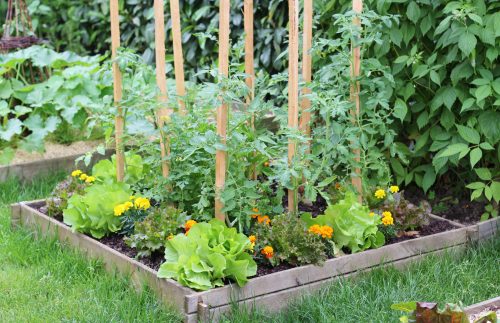
Starting a vegetable garden is easy. It's great therapy (physically and mentally) and synchronises our lives with nature's beat of the sun, soil and seasons.
Where?
Whether it's a square of dirt, in built raised beds, or grown in containers, the location of your vege patch is paramount. The ideal vege patch location has:
- full summer and winter sun (poor light leads to sickly, spindly plants which pests love)
- free-draining soil (heavy rain should not swamp the soil)
- protection from strong winds.
Once you've found the perfect spot, check the soil. Rub a handful between your fingers and look, feel and smell it. Good soil is dark, fibrous, damp, soft, crumbly, and has an 'earthy' not unpleasant smell. If your soil is either heavy clay or thin and sandy, buy garden mix from a landscape supplier for filling containers or raised beds.
When?
Use your senses to determine spring planting time in your locale. Look for new growth in trees and shrubs, the re-appearance of insects and flies, and birds establishing territory.
What?
What to grow depends on the available space – most veges are planted in spring for harvest in summer, so there's a trade off between volume and diversity.
If you're new to gardening, radishes and lettuces are easy to grow, use limited space, and can be harvested within a few weeks. Try beans, tomatoes, courgettes, rocket, spinach and potatoes. These easy-to-grow plants will give you confidence to try growing more exotic edibles in future.
Tips for choosing plants
- Choose varieties of those veges which can be grown all year, such as cabbages, spinach and lettuce.
- Experiment with varieties of each vege – it's a hoot to grow weird and wonderful foods you don't see in the shops.
- Root vegetables and beans need at least half a metre soil depth.
- Watery vegetables (celery, lettuce, tomatoes and cucumbers) require plenty of watering to prevent bitterness and toughness.
- Climbing plants such as beans, cucumbers and peas need canes or frames for support.
- To grow from seed, simply follow the instructions on the packet. Some seeds prefer indoor germination before planting out.
- To plant seedlings, transplant directly into your plot. If a seedling isn't available from a good garden centre, it's probably not the right time to plant it.
www.healthyfood.com










